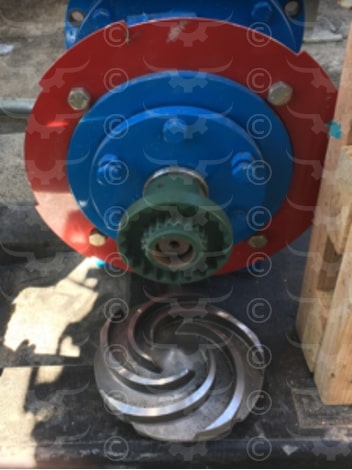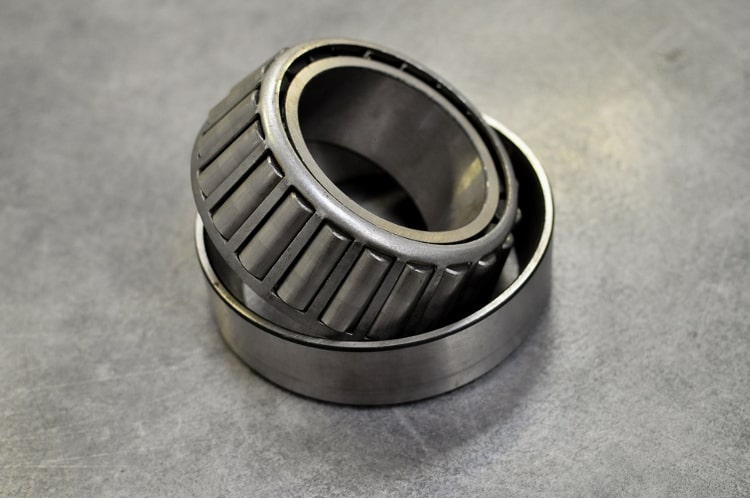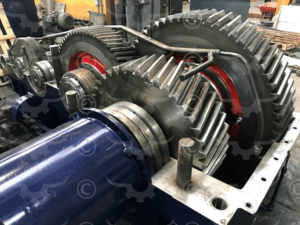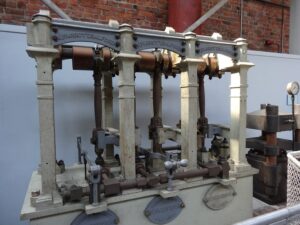Centrifugal pumps convert mechanical energy into hydraulic energy with the help of centrifugal force. These pumps are usually used to raise water and other low viscosity liquid from a lower to a higher level.
There are many elements that aid the effective working of the pump. Let’s explore the main centrifugal pump parts and their role in the pump’s regular operation functions.
Main Centrifugal Pump Parts
There are six main centrifugal pump components that are present in every pump. The different parts of centrifugal pumps are divided into wet end and mechanical end parts.
Let’s take a closer look:
Wet End
These parts are responsible for the pump’s hydraulic performance.
Impeller
The impeller is a type of rotor with curved vanes (blades). It rotates with the help of a motor. This is the most important part of each pump since it transfers the kinetic energy to the liquid.
There are three types of impellers:
- Open: The vanes of this impeller are not surrounded by any walls. Such impellers are usually weaker and are used in low-duty pumps and for liquids with suspended solids.
- Semi-open: The vanes are supported by a back wall which strengthens the impeller. These impellers are more efficient, and can handle liquids with suspended particles.
- Closed: The vanes of this impeller are enclosed by two discs. This impeller type is efficient, but it can be used only for clear liquids.
Based on the suction, there are also single-suction (liquid can enter the impeller from one direction only) and double-suction (liquid can enter the impeller from two sides) impellers.

Casing
The casing is the enclosed space that directs the liquid flow. This snail-shaped body is the biggest part of the pump, and it’s where the impeller is located. Once the liquid enters, the casing slows down its flow rate and converts the kinetic energy into pressure energy. The casing then directs the liquid through a wide-end funnel into a delivery pipe.
There are three main types of casing:
- Vortex casing: This type of casing has a circular chamber between the casing and the impeller. This chamber prevents the loss of energy caused by the circular movement of the liquid. These casings are usually more efficient than the volute ones.
- Volute casing: The volute type of casing has a funnel that gradually widens, which aids the conversion of kinetic energy into pressure energy.
- Casing with guide blades: The impeller is surrounded by guide blades, mounted on a diffuser. The area of the guide blades increases gradually, which decreases the liquid’s velocity and increases its pressure.
Mechanical End
These parts support the impeller within the casing.
Shaft
The impeller is mounted on the shaft. The shaft is a metal part that transfers the energy from the motor to the impeller, causing it to rotate.
The shaft should fit the impeller perfectly. A shaft that’s too small can cause reduced pump life or breakage, and a shaft that’s too big can increase the pump’s operation costs.
Shaft Sealing
The stuffing box (the place where the shaft passes through the casing) should be well-insulated. The shaft sealing system prevents leakage from the pump enclosing into the stuffing box. There are a few types of sealings, including:
- Gland: This seal is attached to the pump casing.
- Spring: The spring helps press the rotating seal ring to the stationary seal ring.
- Stationary seal ring: This ring is fixated on the gland, and it’s attached directly to the pump shaft.
- Rotating seal ring: The rotating ring is sealed to the shaft, and it’s also pressed against the stationary ring.
Shaft Sleeve
The part of the shaft that goes under the sealing is usually covered with a shaft sleeve. The sleeve is made of stainless steel or bronze, and it ensures the shaft is protected and correctly positioned to fit the impeller.
Bearings
The bearings reduce the friction of the shaft and ensure its smooth operations. There are a few types of bearings, including:
- Ball bearings: This is a standard and easy-to-maintain type of bearings that uses balls to support all moving parts.
- Roller bearings: This type of bearing supports the movement of all parts with the help of cylindrical-shaped rollers.
- Babbit bearings: These bearings are coated with Babbit metal. They provide good support for the weight of the shaft and ensure its smooth rotation at high speeds.
- Magnetic bearings: This type of bearing uses electromagnetic forces to support the moving parts without physical contact.

How does a Centrifugal Pump Work?
Before the centrifugal pump starts operating, it needs to be primed. This means that the pump’s body should be filled with water since the presence of any gases or air can damage the impeller.
Once that’s done, the electric motor is started. The impeller starts moving, and water is sucked in through the impeller’s suction pipe.
Once the water is in the casing, the centrifugal force of the pump creates a vortex flow. The kinetic energy of this flow is transformed into pressure energy. The increase in pressure helps move the water from one location to another.
Applications of Centrifugal Pumps
Centrifugal pumps have a simplistic design and are easy to maintain, which is why they’re used across a wide range of industries. For example:
- Waste management: Wastewater management
- Agriculture: Irrigation and drainage
- Food: Sugar refining, food and beverage production
- Chemical and pharmaceuticals: Paints, petrochemicals, and hydrocarbon production
- Oil and energy: Power generation plants, pumping oil
Use a Reliable Service for your Industrial Pump Repair Needs
Centrifugal pumps are simple and efficient machines. Understanding the different parts of centrifugal pumps and their working principle can be quite useful when you’re doing regular maintenance checks of your machinery.
However, if you’re looking for a professional industrial pump repair service, reach out to Houston Pump and Gear. As an industrial pumps service provider, we offer all sorts of repair services, from inspection and reverse engineering to complete pump overhaul and mechanical seal repair. And we offer more than just industrial pump repair in Houston. Our clients are based all over the US, Canada, and Mexico.
So, contact us for a free repair estimate today!




